Best
PERNAMBUCO
CELLO BOW
-
Overall: Well-balanced and consistently weighted
-
Best Feature: Yields a sound that straddles the warmer qualities of wood and the brighter edge character of carbon
-
TedScore™: 9/10
Best
BRAZILWOOD
CELLO BOW
-
Overall: The octagonal shape is comfortable to use and withstands aggressive playing
-
Best Feature: Fully lined ebony frog feels natural to hold
-
TedScore™: 9/10
Best
CARBON FIBER
CELLO BOW
Standard Carbon
Fiber
Cello Bow A Great Step-up Carbon
Fiber Bow
-
Overall: Offers outstanding
response, balance, and tone -
Best Feature: Includes silver-plate winding,
a leather grip, and an ebony frog -
TedScore™: 8/10
When I first picked up my cello, I was oblivious to the bow’s importance to a good cello. Little did I know the bow would become my partner in bringing out the cello’s rich melodies.
There are different types of cello bows, and choosing the right one can sometimes be confusing.
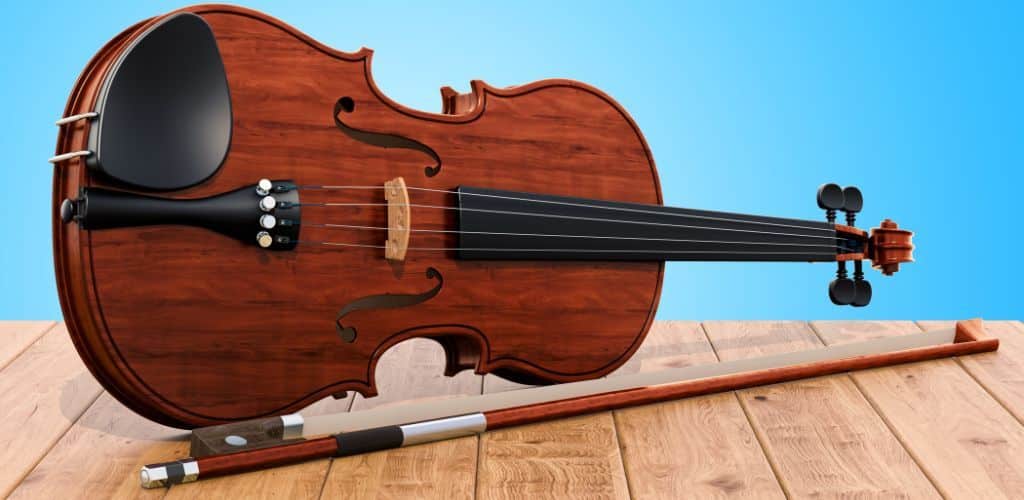
There are many brands and model options in the market for each type of cello bow, and knowing which one to buy can be overwhelming. You have to know the specific details for each cello bow to reach a sound decision.
But there’s no need to be concerned! Read on to learn the rest of the cello bow details you need to know!
As a cello teacher, I always recommend the Howard Core 1085VC Octagonal Brazilwood Cello Bow because it’s a lighter bow with a good balance point suitable for beginners.
Navigating the choices of cello bows is like going on a treasure hunt. Each type offers a unique path to unleashing the cello’s expressive potential.
Understanding
Cello Bow Materials
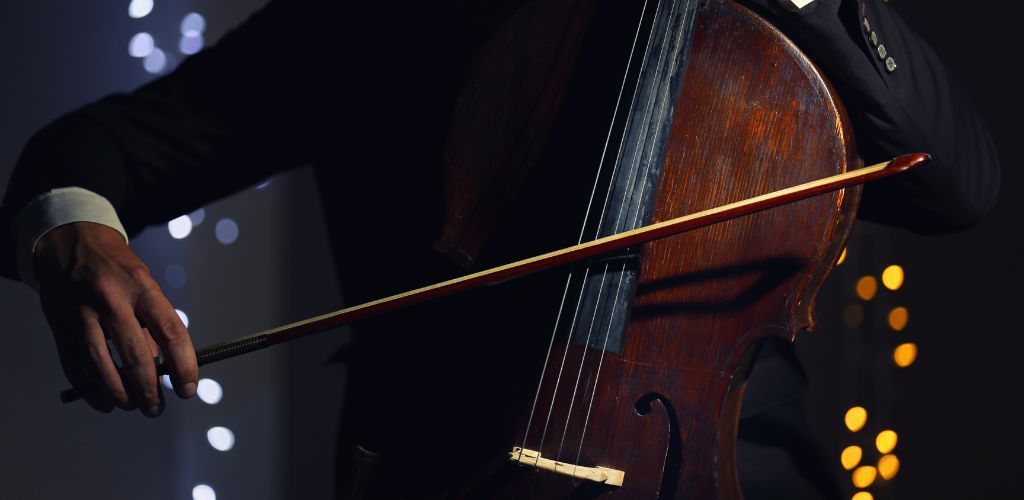
From my experience with cello playing, the heart and soul of my cello’s sound is the higher quality of the bow in my hand.
Crafted from various materials, each type of bow has its personality that can enhance the tone of our beloved instrument.
Pernambuco Bow
Pernambuco wood has long been the gold standard for cello bows, revered for its elasticity and responsiveness.
It’s like the bow has a mind of its own, drawing out a warm, rich tone from my cello with every stroke of fine bow.
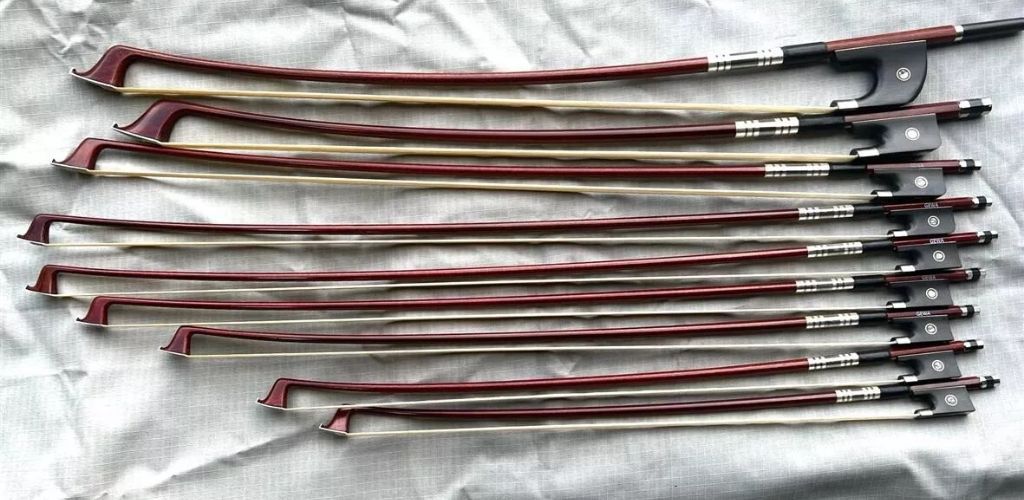
I recently tried the GEWA Carbon Pernambuco Hybrid Cello Bow with full-lined nickel, and I was pleasantly surprised by its smooth handling and the warm tone it drew from my cello.
GEWA Carbon Pernambuco Hybrid Cello Bow

FEATURES: Well-balanced and consistently weighted
OTHER INFO: Yields a sound that straddles the warmer qualities of wood and the brighter edge character of carbon
- Durable hybrid construction
- Includes a full-lined, ebony frog and nickel winding
- Some players may not prefer the hybrid construction
When you click ‘Check Price’, you’ll see there are loads of great places to buy this item. Our personal favorite is Sweetwater for the US, and Thomann and Gear4Music for the UK & Europe.
They are the largest music retailers, with excellent customer service, competitive prices, really fast shipping, and the longest guarantees.
The professional musician who wrote this article combined many things,
from the product build, manufacturer’s reputation through to feedback
from other users, to create our famous TedScore™.
Brazilwood Bow
In contrast, Brazilwood, a more affordable cousin to Pernambuco, is often found in student bows.
Although budget-friendly, Brazilwood bows still have a pleasing timbre, helping budding violinists and cellists find their musical voice.
As a professional cellist, I’ve found the Howard Core 1085VC Octagonal Brazilwood Cello Bow to be a reliable and articulate choice.
It offers a well-balanced blend of flexibility and strength that complements my dynamic playing style.

Howard Core 1085VC Octagonal Brazilwood Cello Bow
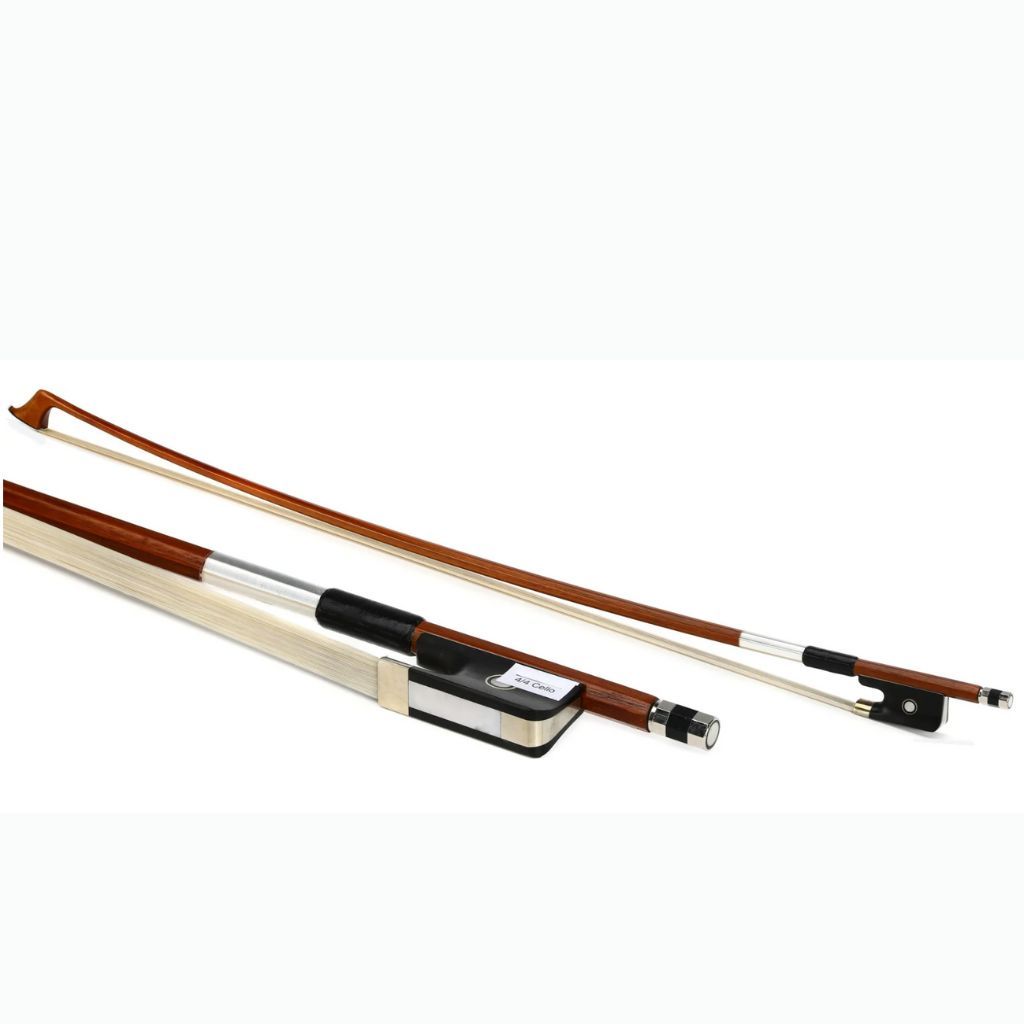
FEATURES: The octagonal shape is comfortable to use and withstands aggressive playing
OTHER INFO: Fully lined ebony frog feels natural to hold
- Unbleached horsehair for producing excellent tone
- Ideal for beginners
- None!
When you click ‘Check Price’, you’ll see there are loads of great places to buy this item. Our personal favorite is Sweetwater for the US, and Thomann and Gear4Music for the UK & Europe.
They are the largest music retailers, with excellent customer service, competitive prices, really fast shipping, and the longest guarantees.
The professional musician who wrote this article combined many things,
from the product build, manufacturer’s reputation through to feedback
from other users, to create our famous TedScore™.
Carbon Fiber Bows
Now, let’s chat about carbon fiber bows. They’re the modern mavericks of bow materials, boasting durability and consistent performance.
Their sound is reliable and beautifully clear, making them a top pick for players of all levels.
The Yamaha CBB-301 Standard Carbon Fiber Cello Bow stands out for its lightweight durability and consistent performance.
It provides reliable and comfortable playability that suits both practice and performance settings.

Yamaha CBB-301 Standard Carbon Fiber Cello Bow
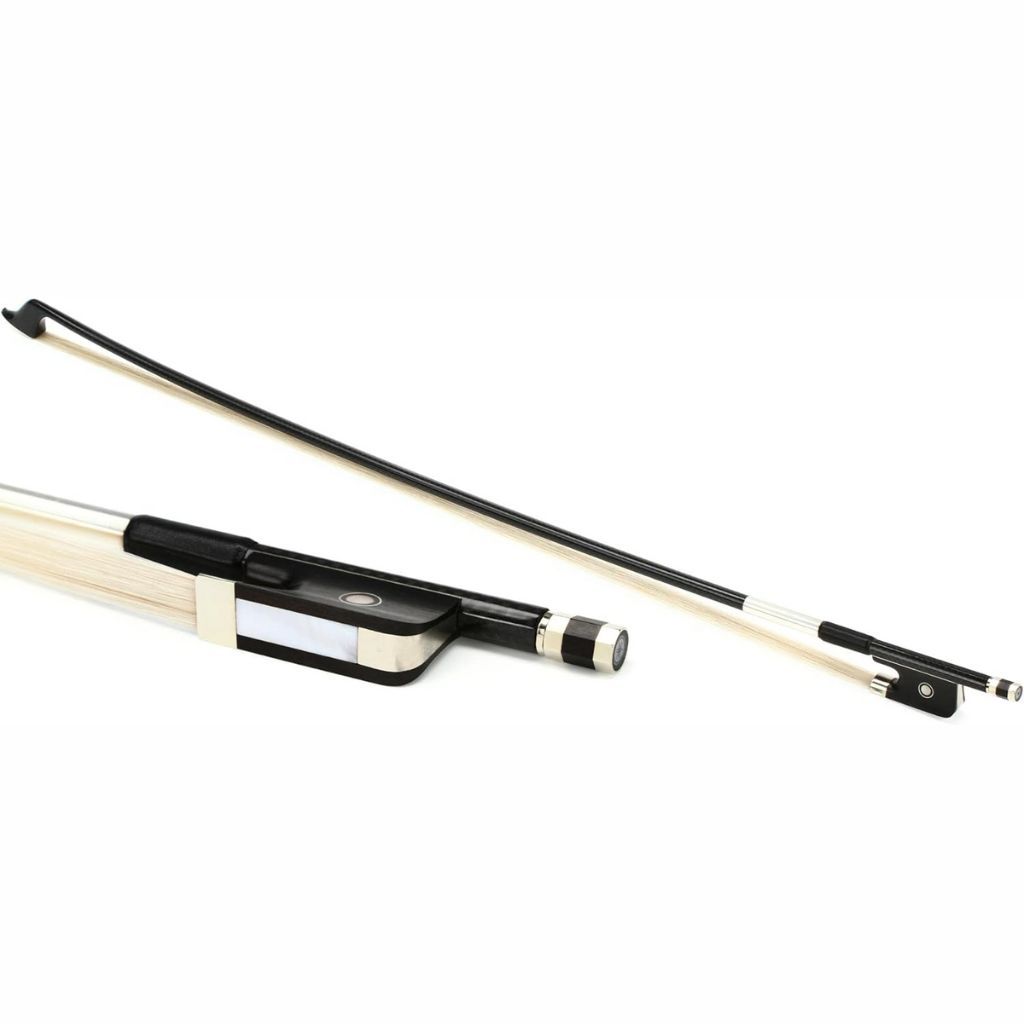
FEATURES: Offers outstanding response, balance, and tone
OTHER INFO: Includes silver-plate winding, a leather grip, and an ebony frog
- Can withstand aggressive playing and is resistant to warping — even in humid climates
- Hand-finished by a skilled craftsperson
- No Cons!
When you click ‘Check Price’, you’ll see there are loads of great places to buy this item. Our personal favorite is Sweetwater for the US, and Thomann and Gear4Music for the UK & Europe.
They are the largest music retailers, with excellent customer service, competitive prices, really fast shipping, and the longest guarantees.
The professional musician who wrote this article combined many things,
from the product build, manufacturer’s reputation through to feedback
from other users, to create our famous TedScore™.
Fiberglass Bows
I’ve noticed fiberglass bows are becoming popular with beginner cello players, too.
They offer resilience, decent sound, and string quality without breaking the bank—it’s like getting a sturdy yet refined tool for exploring the cello universe.
As a seasoned cellist, I appreciate the Glasser 401H H Series Fiberglass Cello Bow‘s robust construction and affordability.
It offers a practical option for beginning students or those seeking a decent backup bow.
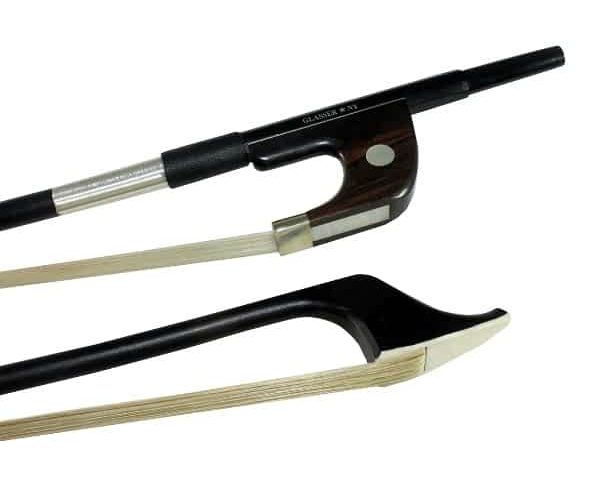
Glasser 401H 4/4-size H Series Fiberglass Cello Bow

FEATURES: Lightweight fiberglass box construction
OTHER INFO: Includes a half-lined frog, metal under-slide, and imitation 3-part button
- Wide, easy-to-grip diameter
- Unbleached white horsehair and a comfortable leatherette grip
- None!
When you click ‘Check Price’, you’ll see there are loads of great places to buy this item. Our personal favorite is Sweetwater for the US, and Thomann and Gear4Music for the UK & Europe.
They are the largest music retailers, with excellent customer service, competitive prices, really fast shipping, and the longest guarantees.
The professional musician who wrote this article combined many things,
from the product build, manufacturer’s reputation through to feedback
from other users, to create our famous TedScore™.
Bows can be fitted with an ebony frog and adorned with nickel, silver, or even gold for a dash of fanciness.
These materials don’t just look stunning; they perform; they balance the weight and add a certain joy to my cello playing.
Factors Affecting
Cello Bow Selection
When choosing a cello bow for cellists, I consider several factors affecting playability and tone. Each cellist will weigh these differently based on personal preference and playing style.
Weight and Balance
A heavy bow might offer strength and a sturdy feel but can lead to fatigue over time.
Lighter bows feel lighter and are often more manageable, reducing my arm and wrist strain.
The bow’s balance point is equally crucial; a well-balanced bow feels comfortable in my hand and enhances my control during play.
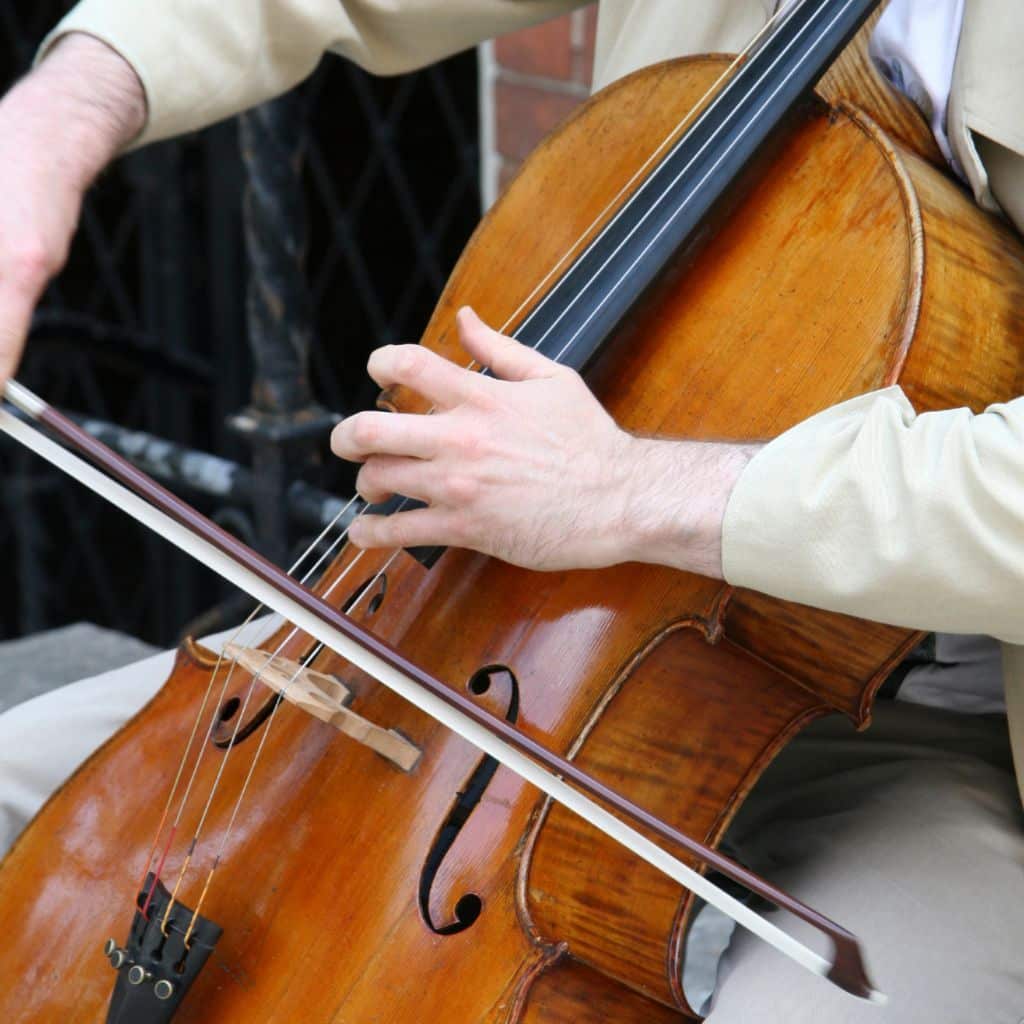
Sound and Playability
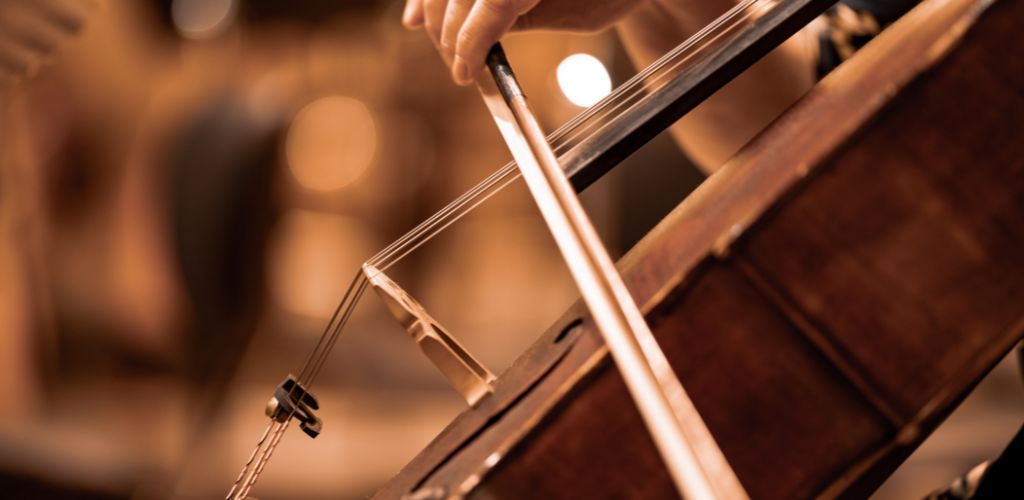
The material of the bow stick, typically wood or fiberglass, significantly determines the sound quality and responsiveness.
Wooden bows have a warm, organic sound that I find perfect for complex pieces.
Fiberglass bows and carbon fiber options provide durability and a clear tone.
Physical Comfort and Bowing Techniques
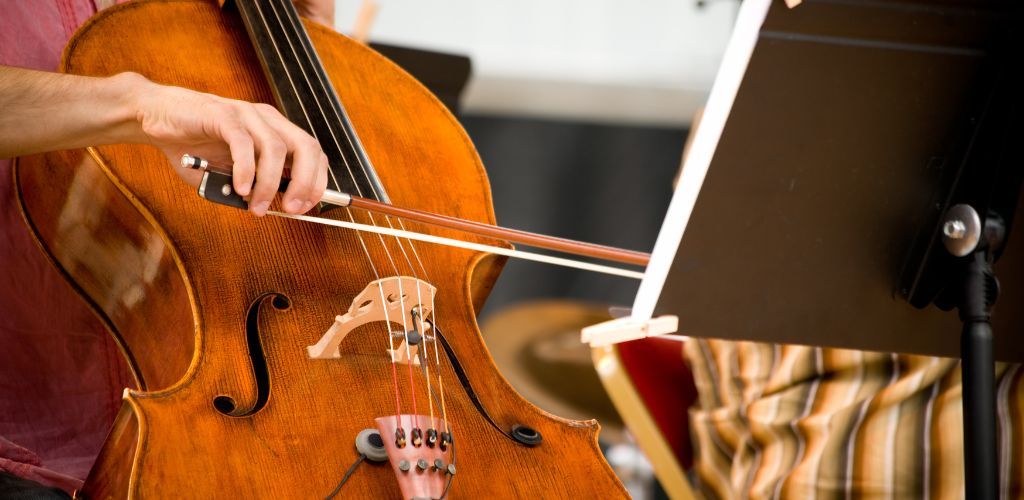
Comfort is everything, and the bow must feel like an extension of my arm.
Variations like round or octagonal-shaped sticks and differences in the frog design, like the fine silver fittings and ebony wood found on heavier bows, play a role in how the bow feels during different bowing techniques.
The weight distribution affects my ability to apply the appropriate pressure and sustain the right tension through various strokes.
Types of Cello Bows:
Final Piece of Advice!
Choosing the right cello bow is like picking a dance partner. It’s a very personal decision and an essential aspect of my performance.
I’ve played with bows made from materials like Pernambuco or Carbon Fiber.
Pernambuco, the traditional choice, has a unique elasticity and offers warm, rich tones.
Carbon fiber, a modern innovation, impresses me with its durability and consistency.
Bow hair, typically horsehair, can also impact my performance. It’s responsible for that sweet friction against the strings.
Even the grip and weight distribution are factors to consider. They are important characteristics for bow feel and can drastically affect my comfort and the bow’s responsiveness.
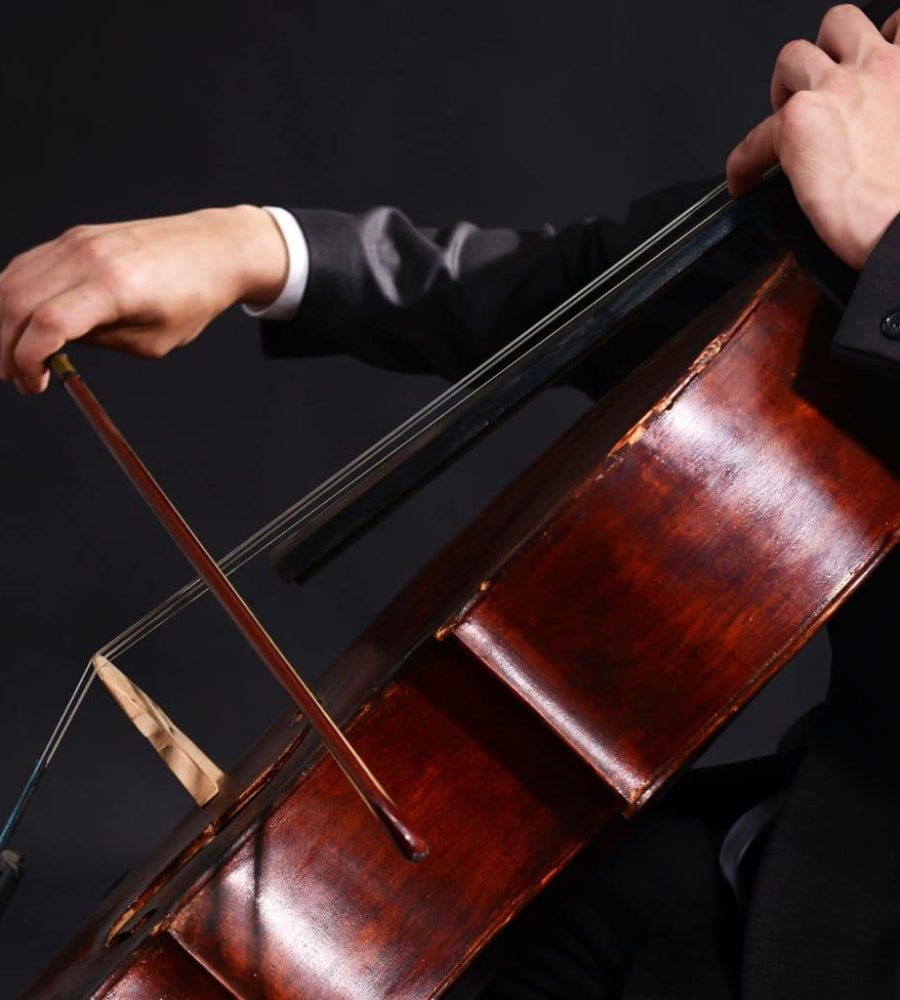
Selecting a new bow is often a delightful journey reflecting my music approach. It’s about finding the perfect balance of feel, sound, and playability.
Each good bow is unique, and the right one can truly elevate my cello playing to new heights!
And to give you additional information…
Now that you know the different types of cello bows and the factors you need to consider in choosing one, this next article will be your next step. Read this one to have the ultimate guide in buying the best cello bow for you!
FAQ's
Yes, cello bows can significantly improve the instrument’s sound quality, playability, and overall responsiveness.
To choose a bow for your cello, consider factors such as weight, balance, stiffness, and the quality of sound it produces, ideally through trying different bows with your own instrument to find the best match for your playing style and preferences.
A heavy cello bow typically offers greater sound projection and control for aggressive playing. In contrast, a narrow, light bow allows quicker response and easier maneuverability, making it suitable for more serious play in nuanced and delicate passages.
Carbon fiber cello bows are known for their durability, consistency, and resistance to environmental changes, making them a good option for players seeking a reliable, low-maintenance string bow.











So where’s the love for us fiddle switchers? Cello bow’s like rowing a boat! 😆
so, about these fiberglass bows. they’re cheap, but you get what you pay for, right? Any students should aim higher if they can.
Wonderful article, Ellen! I’ve been playing the cello for over a decade, and it’s refreshing to see someone detail the nuances of cello bow materials so comprehensively. From my perspective, the Pernambuco bows truly stand out in terms of warmth and responsiveness. It’s important for new players to understand how crucial the right bow is in crafting their tone.
Totally agree on the Pernambuco! Changed my sound completely.
Hey, I’m kinda new to the whole cello scene. I got a question about those Carbon Fiber Bows mentioned by Ellen Porter. Do they really match up to the traditional ones in terms of the sound quality? Thanks!